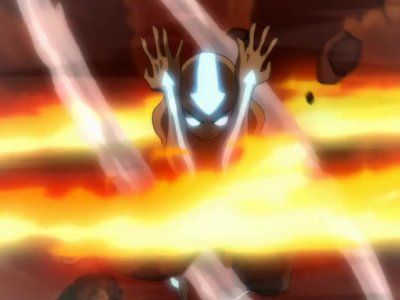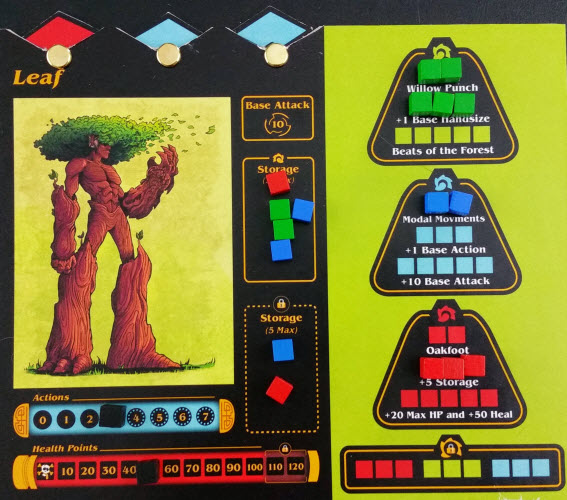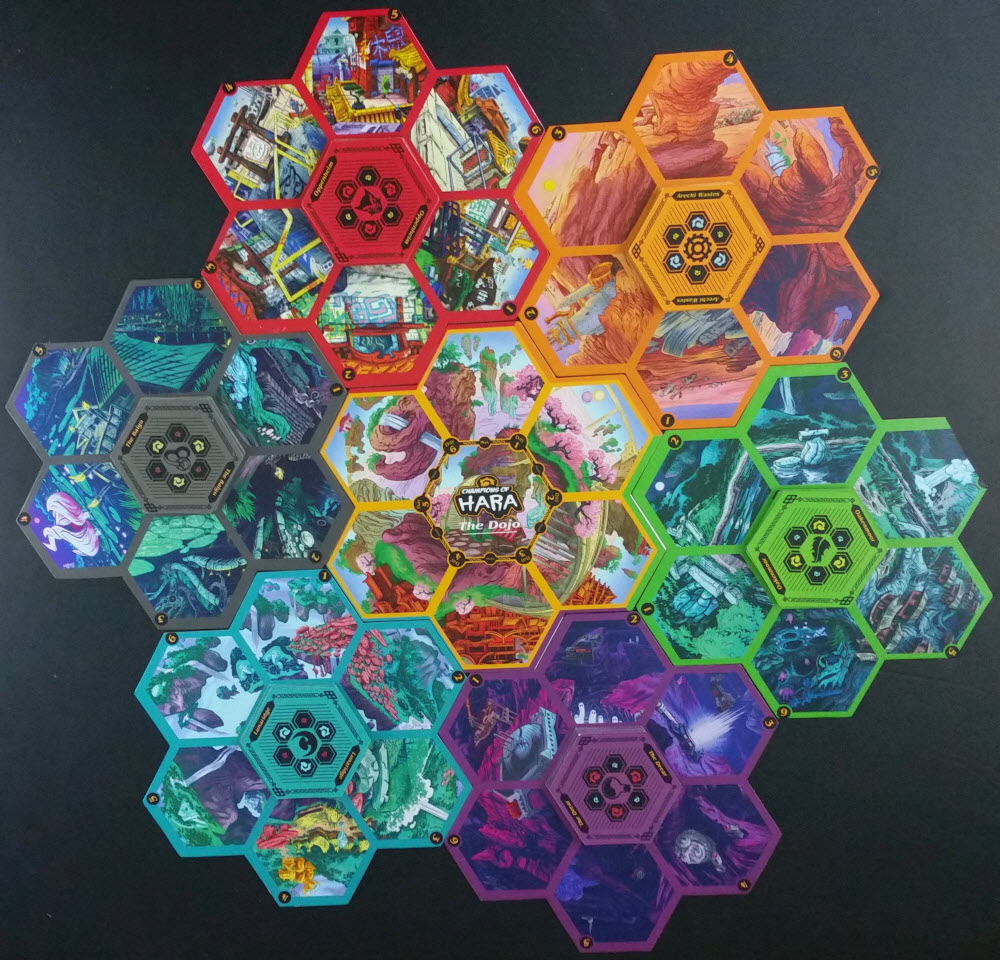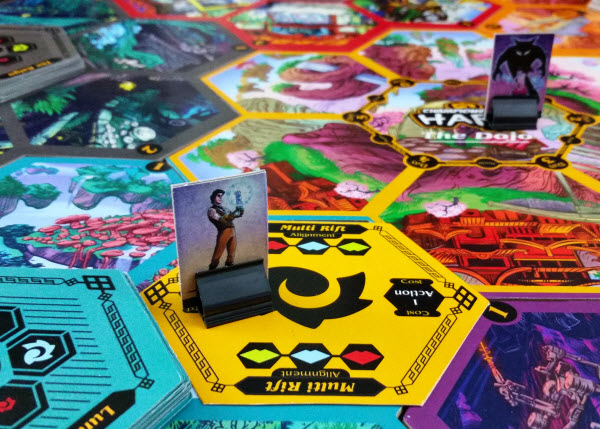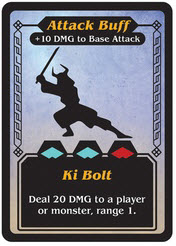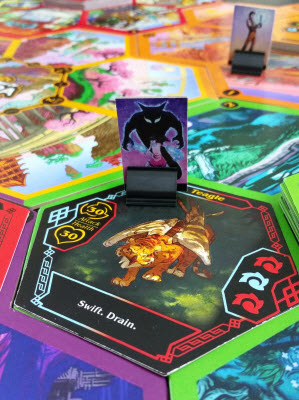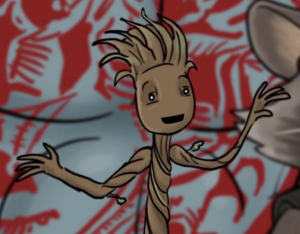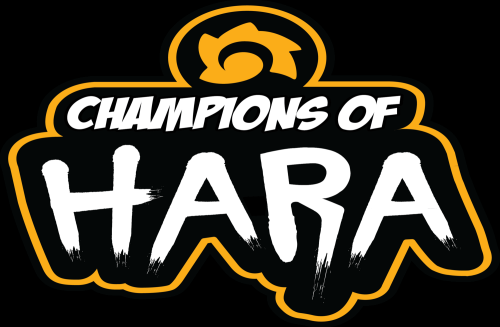 Don’t you hate it when you’re sitting there, minding your own business, and some crazy person opens up a portal to your world to proceed to ask for your help? Some world you’ve never heard of is in danger and they need you. They assure you the rewards will be worth it. Riches. Power. Fame. Glory. It’s yours if you succeed. Then you’re whisked off before you can even finish your turkey sandwich.
Don’t you hate it when you’re sitting there, minding your own business, and some crazy person opens up a portal to your world to proceed to ask for your help? Some world you’ve never heard of is in danger and they need you. They assure you the rewards will be worth it. Riches. Power. Fame. Glory. It’s yours if you succeed. Then you’re whisked off before you can even finish your turkey sandwich.
Boy, if I had a nickel…
So where have you been brought this time? Why to Champions of Hara: a resource gathering, monster slaying, energy hoarding game set in a world that’s one part plane of Zendikar, one part Wheel of Time, and one part The Last Airbender.
Champions is the inaugural release by Leaf Pile Media, where 2-6 players race against time – and each other – to solve a potentially catastrophic event on the world of Hara. This world, like so many others with a strong magical undercurrent, has an absolute necessity for its energy forces to remain in balance with one another to maintain stability. Otherwise you end up with random energy rifts, elemental monsters, unstable terrain, and all of that will occur before afternoon tea.
So…guess what happened?
Yeah.
On Hara, every couple centuries or so the three primary energies of this artificial plane go completely sideways in an event known as the Conflux, unleashing all sorts of havoc as they spin out of control. Desperate, the people of Hara have recruited champions (the players) from a host of worlds in the hopes that one of them will be skillful enough to master all three energy sources before it is too late. In return, the person who can master the Conflux and restore balance will become the new Avatar be rewarded with untold powers.
The game begins with each player choosing a character, whether it’s someone like the ambitious pyromancer Sof, the steampunk-like engineer Thomas Evening, or the shadow mage Persephone and her pet Haunter. Hara actually does a great job representing the game’s flavor right out of the gate with them, depicting each of these people as strangers in a stranger land.
At the beginning of this Highlander-like race for power, everyone begins a player board to start. A board like this:
Everyone begins with 100 health and 3 Action Points to spend per turn. Players also begin with an energy storage of 5 and an attack power of 10. Additionally, all players have three adjustable Energy Alignment trackers. These trackers come in the three colors that correspond to the three energy sources coursing through the world, and it symbolizes the energy frequency that your character is currently operating on at that moment. You continually adjust these Alignments throughout the game, and this mechanic is in many ways at the heart of how Hara functions. It’s a simple yet effective mechanic that works particularly well in its mixing of flavor and purpose.
However, as these characters are diverse in concept, so too are they in execution. Beyond the basics, Champions of Hara utilizes slightly asynchronous characters, the effect of which is felt more as the players grow in power. This is expressed through a deck of cards tailored to their champion, as well the Color Attunements field on their board. Functionally, one character works the same as one another, but as you would expect, a pyromancer and a giant sentient tree are going to want to do things a little differently. That is represented here.
The splintered world of Hara itself is depicted through seven different boards. Six of these represent the various regions of Hara, with the center area – the Dojo – lying at the center.
Well, at first anyway.
The Dojo is generally a safe zone, free from the dangers of monster or fellow competitors, and this is where everyone’s quest begins.
Before even leaving the Dojo, though, two things are very noticeable about Champions of Hara. Firstly, the game does a fantastic job with its artwork, with each region well decorated and distinctly different than one another. This says nothing of the artwork of the cards that will get revealed over the course of the game that heavily reinforce that fact, diminished only by occasional instances where lots of cards on the board can make everything look a little busy. The second thing is that Champions requires a table space. Between the central boards, the player areas, and several component piles, Hara is a big place; a Coffee Table Game this is not.
Once underway, the game is split into a series of rounds, called Days. Every Day, a new host of challenges are spawned for players to face. These are revealed from the Dawn and Dusk decks, respectively. These cards are randomly placed across the planes of Hara, as determined by rolling a pair of dice. While this can be a little tedious later in the game when you’re rolling eight or ten times per Day, this act also increases the unpredictable nature of a world being torn asunder. Dawn and Dusk cards both contain monsters to fight and rifts to close in exchange for the precious energy cubes you need to level up, with Dusk cards generally being more dangerous.
Next, players choose turn order (think Archipelago, Viticulture, or Twilight Imperium), with every position besides going first bestowing a bonus for the round, such as gaining HP. As you’d expect, going first in Hara can be quite advantageous in grabbing a quick kill, for instance, but there are also plenty of times where the benefits of going later in the order are equally worthwhile. This system works especially well in Hara, giving the game an added degree of strategic depth, especially as competition between players ramps up.
Plus, who doesn’t love free stuff?
Once resolved, players take their turn according to turn order. Then they do it a second time. Turns in Hara are surprisingly fluid in terms of what you can do, which is both one of the game’s greatest assets and its one real hangup.
Your three actions per turn can be spent on basic things like moving from one space to another, changing one of your Energy Alignments, closing a gate that matches your Energy Alignment, etc. However, three important things in the game are free actions: playing cards, leveling up, and Encounters.
A player’s cards are incredibly useful, bestowing really potent effects. Every player starts with four cards, and you can use as many of them during your turn as you wish. Every card in the game has a normal effect, such as moving spaces or changing Energy Alignments, but many cards also have a much more powerful powered effect that can be used instead if a player’s Alignment match those listed on the card. And yeah, they’re worth it.
Leveling Up is as simple as journeying back to the center of the Dojo once you have enough energy cubes to fill up one of the lines on your board. These upgrades include things such as increased storage, more attack power, or powerful new cards. All of them are useful, but you have the complete freedom to pick and choose which to focus on.
The final free(ish) action is Encounters. If you’re in any empty region space but the Dojo’s, you can choose to have an Encounter there by drawing the top card of that region’s deck. These cards offer up story flavor, along with potentially good things (useful items!), or bad things (a monster appears!). These give off a distinctive vibe in the vein of Arkham Horror or Dead of Winter – in a good way. In Champions, though, you can continue having Encounters that turn at the cost of 1 AP each.
That, or until you come across a gate beyond your skill or monster who decides to eat your face.
Encountering monsters – willingly or not – are also free actions. Congrats on that. Combat in Hara is fairly simple though. You fit the monster, then it hits you back. Generally, you keep doing that until one of you is dead. If the creature dies, you collect its energy. If you lose, you only become mostly dead. Yeah…death isn’t really a thing on Hara. Instead, you claim a removable Soul Wound, lose half your stuff, and respawn randomly to start again. Tough life, that.
Having all these free actions gives a high degree of freedom and control to the player over how they want to take their turn, making for a dynamic adventuring experience every playthrough. However, this freedom comes at a cost, in that it isn’t the most streamlined process and can be tough for new players to grasp initially. Thankfully you can track AP on your board, as after several minutes of charging into battle and facing down a scaly beast, you may not accurately remember how many actions you have left.
After everyone finishes their second turn, the round ends by illustrating Hara’s innate instability. Here, a die roll determines which region physically switch places with the Dojo. This is admittedly a neat part of the game, but it can also be particularly fiddly picking up two board sections that may be littered with cubes, cards, and players, and move them elsewhere without knocking everything over. It’s a balancing act, but it does offer both a thematic and strategy-adjusting payoff.
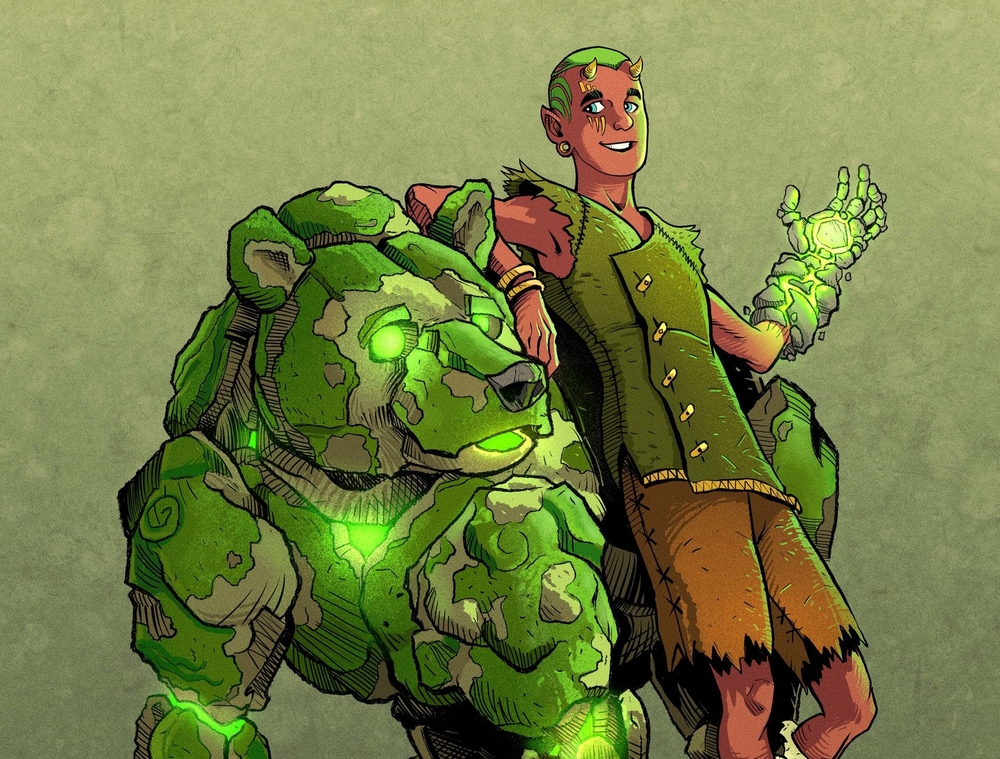 Although the Conflux is fully powered up after six Days, the game only ends once a player completes all of their normal upgrades plus their final one. The first player to do that absorbs the power of the Conflux and becomes the winner. Still, it feels strange that this super power Conflux event sort of stops at Day 6, even if it takes nine for someone to win.
Although the Conflux is fully powered up after six Days, the game only ends once a player completes all of their normal upgrades plus their final one. The first player to do that absorbs the power of the Conflux and becomes the winner. Still, it feels strange that this super power Conflux event sort of stops at Day 6, even if it takes nine for someone to win.
As a result, the game can present the feeling of taking slightly longer than it should. Clocking in at about an estimated 30 minutes per player, Hara is on the same time commitment as some heavy Euro games. Yet Hara is not one, nor is it a co-op game, or one that’s directly combative. Hara is firmly an adventure and exploration game, where everyone running around doing their own thing, competing with one another over resources more than hit points. Though some potshots are possible.
Prototype components notwithstanding, Champions of Hara certainly could use a tad more fine-tuning to tighten up some of the game’s more minor concerns, but even taking those into account it’s evident that the fundamentals of this game are solid. The game does a remarkable job blending existing mechanics and overarching flavors together into something that is at once familiar territory while presenting a wholly original setting. The artwork and bevy of available decisions of Hara are particularly impressive, evoking the game’s comic-like adventure of trials and conquest without being too constrictive or devoid of purpose. When combined with the randomness of card spawnings, Encounters, and the shifting board itself, this conflux of factors makes Champions of Hara a worthwhile and replayable immersive experience. If you want to enter the portal to Hara, you can find it right over on the game’s Kickstarter.
Photo Credits: Hara logo, Kaoru, and attack card by Leaf Pile Media; Avatar by Nickelodeon; Baby Groot by How It Should Have Ended.

